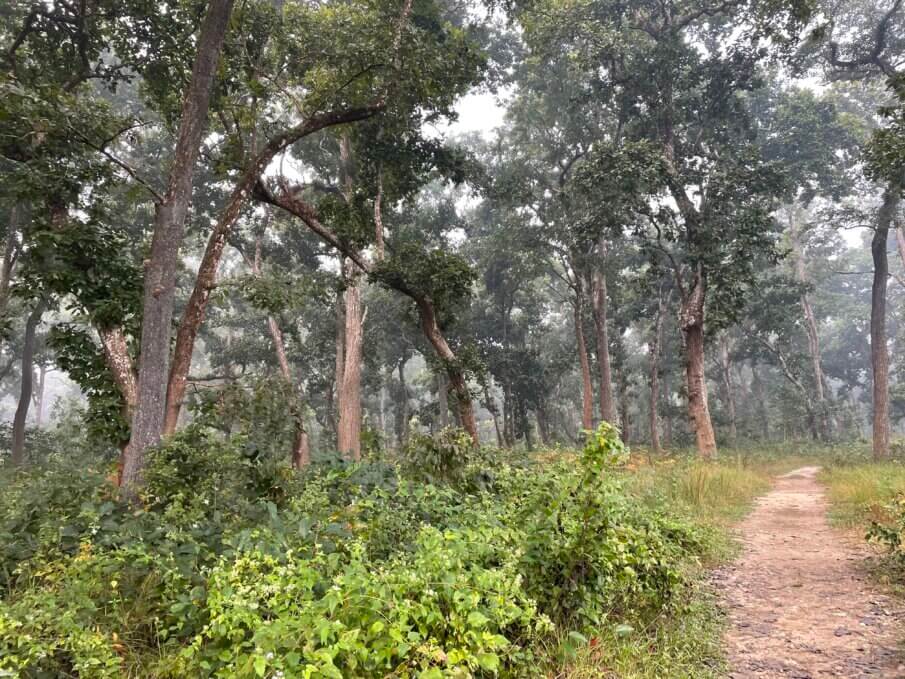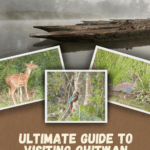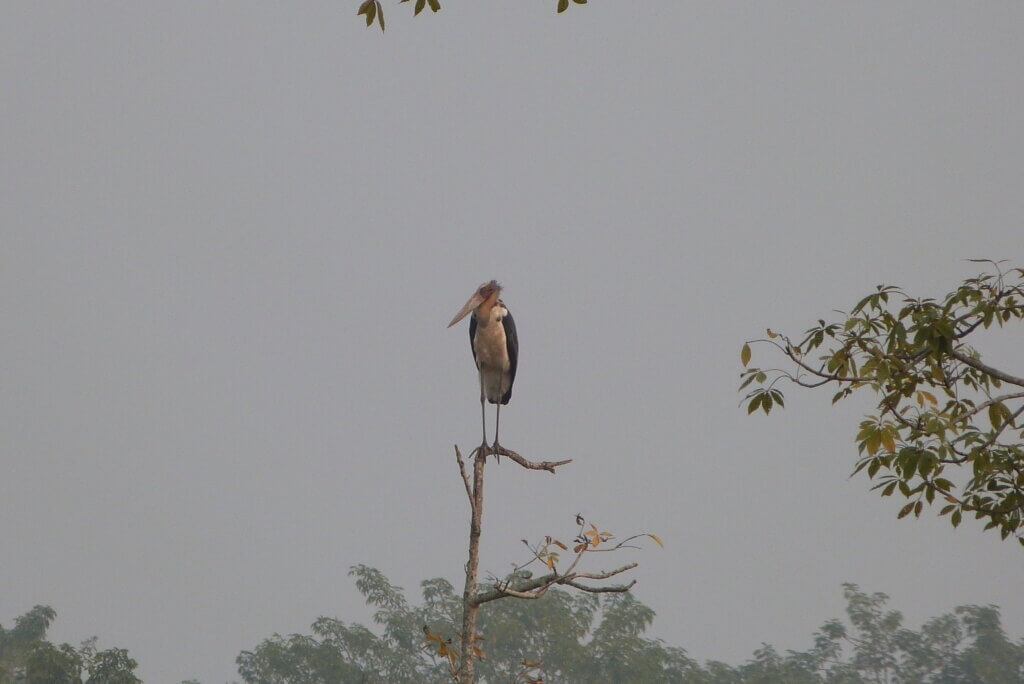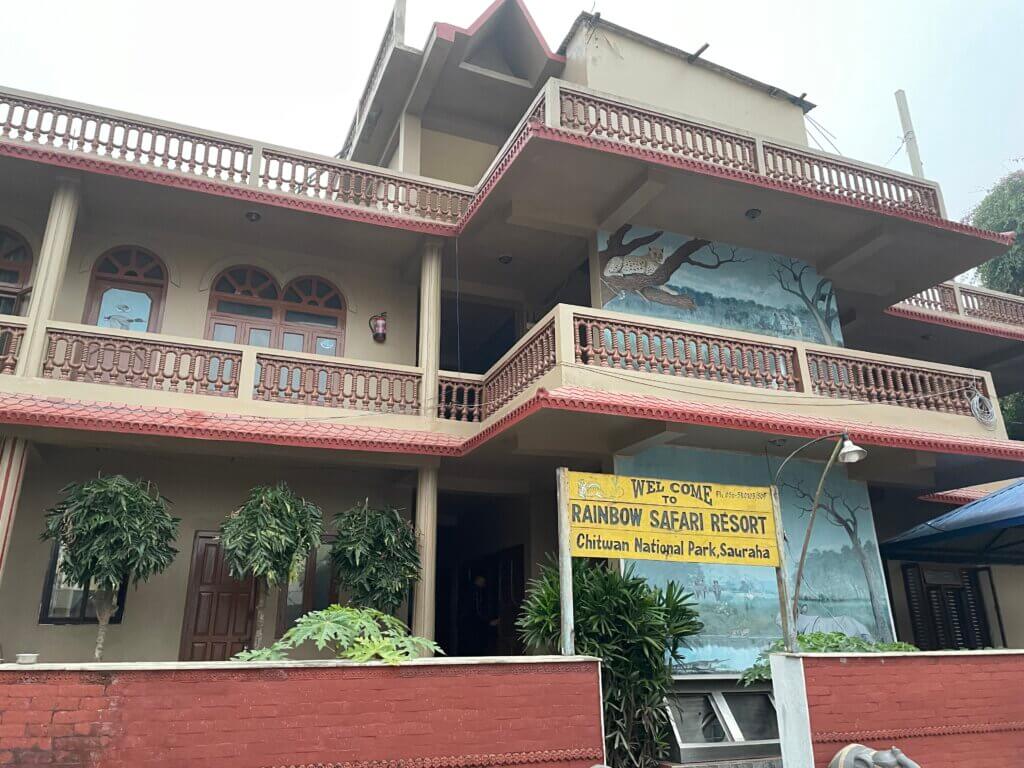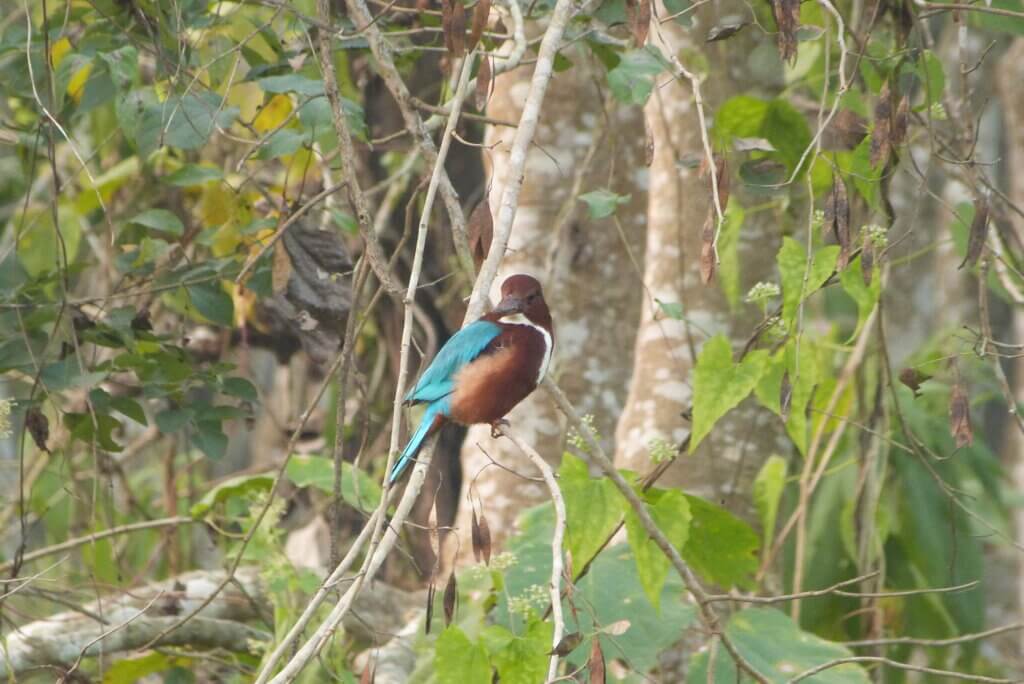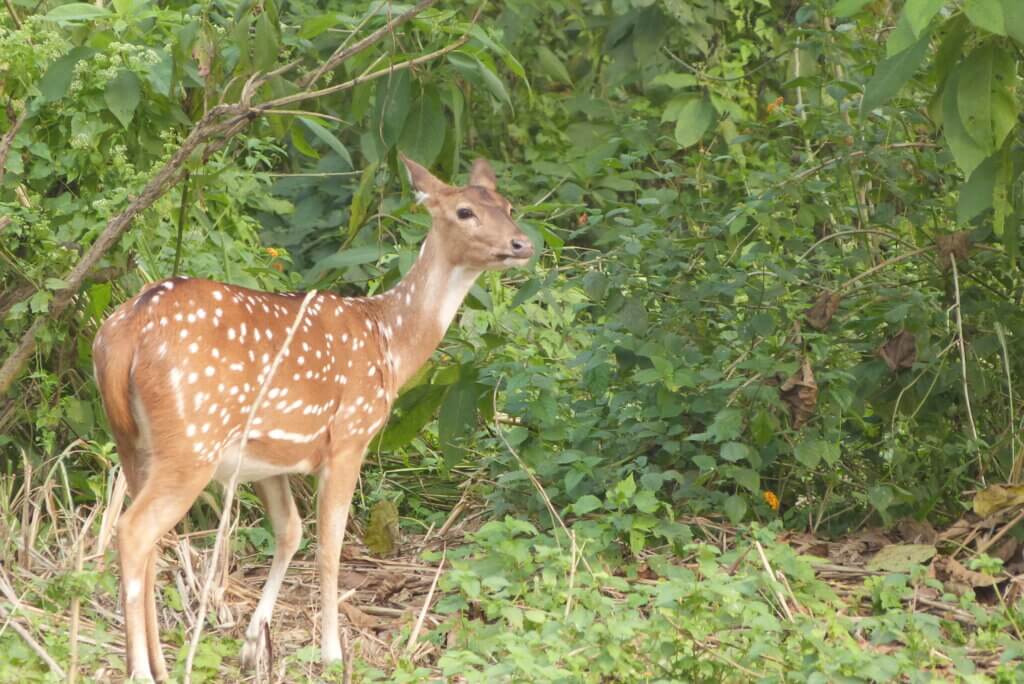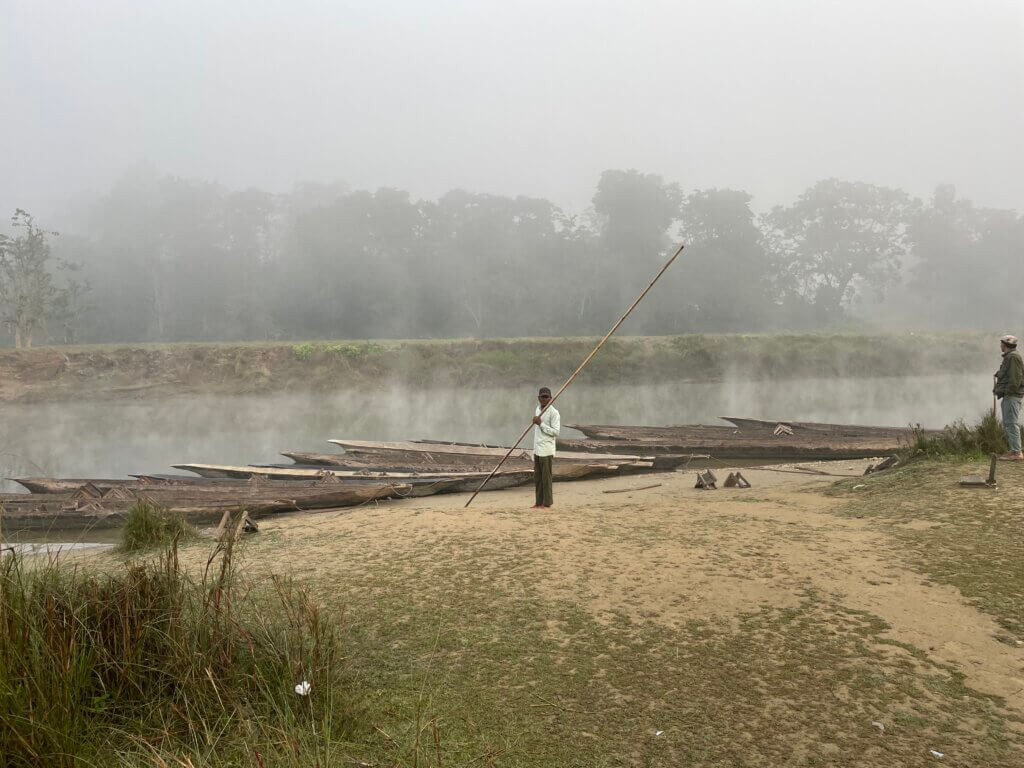*This post contains affiliate links, if you click a link I make a small commission and you help support the blog
Nepal is a country with a great diversity of landscapes. When most people think of Nepal, they think of the mountains, particularly Mount Everest and the Annapurna Circuit. But close to the border with India is an area with multiple forest types, including rainforest. Here you can see a diversity of wildlife and immerse yourself in nature.
Chitwan National Park, a UNESCO world heritage site, has been a popular destination for wildlife enthusiasts for decades and is one of the best places to go bird watching with migratory birds coming through in the winter and total of 540 bird species. But there is so much more to see and do here and this guide will help you plan your trip to Nepal’s first national park.
Best time to visit
The best time to visit is during the winter months when the temperatures are cooler, there is little to no rainfall, and there are little to no mosquitos. The monsoon makes it impossible to visit these places.
Getting there
The drive there is through mountain roads, that recently were severely impacted by many landslides from the intense monsoon season. With changing climate these rainfall events are going to become more extreme and sections of road are just washed away. It is a very bumpy and rather treacherous 6 hour drive from Kathmandu.
You can take a bus or rent a driver to get you there or the other alternative is to fly (Bharatpur Airport). I have been told by some local peoples not to fly domestic flights in Nepal as they are unsafe, but I don’t know that for sure.
Travel Tips
Don’t drink the water or eat salads and fruit
In general the water is not safe to drink in Nepal and you should always have a filter water bottle with you, I recommend you use CrazyCap to purify your drinking water from mold, bacteria, and viruses. It’s one of my favorite UV filters for travel.
Be careful walking around the area at night
Wildlife don’t stay in the parks and you can sometimes see wild rhino roaming the streets, so be careful where you roam and don’t get too close.
Best way to see wildlife
Go on a Jeep safari
You can join one of the group tours of up to 13 people on a jeep safari. This is a great way to do some wildlife viewing, even with the high elephant grass in the fields. There are a number of animals you have the chance to see but many are endangered species and their numbers are low, so for some species it can be extremely challenging to see them. This is especially true for the royal bengal tiger, of which there are only about 128 in the park and the sloth bears.
One species you may see, however, is the one-horned rhinos, of which there are about 600 in the park and this species is only found in Nepal and India. Knowledgeable guides will help you identify any bird species you see and know where the highest chances of seeing particular species will be.
Take a jungle walk
In my opinion, a walking safari is the way to go and your best chance to see wild animals. Briefed before heading into the forest, our guide told us the risks including running into wild elephants, tigers and sloth bears. We did not encounter any of these animals, not even at a distance, but I think we were all a little uneasy at first about being eaten or stomped during our hike.
The walk takes around 2 hours, with local guides, longer depending on how long you want to spend at a wildlife sighting. One my safari I saw 3 of the one-horned rhinoceros in one area, a mom and her baby and a big male. This is a rare sighting to see this many together, but with the government actively monitoring this park for poachers, their numbers have been rebounding slightly.
For a higher chance of seeing endangered species or if you are really keen to see a tiger, you should consider a multiday trek. You will stay at a home stay and spend your days going into the jungle and hiking. This will increase your chances of seeing more wildlife.
Go on a canoe ride
One of the best things to do as part of your overall tour is to go on an early morning canoe ride. This is truly a unique experience and the best way to see a lot of species of birds all in one place. The canoes are hand made dug out canoes and can hold 6-8 visitors plus a guide and one guy to paddle with a long bamboo pole. The river is extremely shallow, with some areas of faster moving water, but I never felt like I would fall in once we got going.
This is one of the best places to see the two species of crocodiles, the Gharial crocodiles and the mugger crocodile. There are also peacocks, kingfishers, herons, and many more bird species to be seen.
Additional activities that are part of a tour
Visiting a Tharu village
As part of the canoe ride and jungle walk, you will also visit a local Tharu village. This group is living a lifestyle similar to their ancestors with the grass huts and farming traditional practices. Though they are adapting to newer technologies, you will visit a small museum showing the tools used in the past by the people of this village.
They are also thought of as malaria resistant due to their genetics. The Chitwan area used to be a hotspot for malaria until it was controlled and eradicated, however, the people of the area, the Tharu people, never got sick and it is thought that they have a genetic mutation that provides them with immunity from the pathogen.
Visit the elephant breeding center
Another part of that morning tour is a visit to the Asian elephants at the elephant breeding center. When I first arrived here I wasn’t sure how I felt about it. However, I was told by the guide that these elephants were bred for use by the government to prevent poaching in this park and other parks. They use the elephants because they can travel anywhere easily in the park, making it easier to catch poachers and numbers of rhino, tigers and other typically poached animals have increased due to these conservation efforts.
I had concerns about them being kept chained instead of being provided with a way to have free roam. For those answers I chatted separately with a wildlife veterinarian who worked his entire career in Nepal. At one time they received funding to create an area that would allow these animals to be chain free. Keeping in mind that these animals would normally roam hundreds of miles in the wild.
Things apparently went well until the monsoon season hit. When things became very wet the elephants developed severe foot issues, so severe that most veterinarians would recommend euthanasia. This occurred because the area they were allowed to free roam was impacted by the monsoon. I was told it took many years for those elephants to recover from those injuries and have been reverted back to chain living since then. Unfortunately, it was a failure.
This program will continue while there is a need to protect wildlife from poachers. It is not perfect and they have tried alternatives but as it stands right now, these animals remain chained with trips to the forest between 10:30 and 4 each day so they are their young can graze. Until we can end poaching and educate people on the importance of protecting these species instead of killing them for profit, this will continue. I will let you decide your feelings on it.
I can see the good they are doing to protect other animals, but again, it’s not perfect and sometimes it is impossible for it to be perfect. But the alternative is that the world losses more species to extinction because of poaching.
A word on the elephant safari
Many companies offer an elephant safari, which I do not think is the best option. Riding elephants may get you to areas in the park that are not easily accessed by jeeps or on foot, but this is promoting inhumane animal tourism.
As tourists we have the ability to bring these sorts of things to a stop by not going on these safaris. If they are not in demand, they will not be offered. Though many in this area see elephants as either domestic or wild and use them for many purposes, some more noble than others, using them for tourists amusement should not be one of them.
There are more sustainable ways to provide ecotourism in this incredible part and they are on offer, so why not choose them over an elephant ride?
Concluding thoughts
There are a ton of species of mammals and birds to see in Chitwan National Park and it is a great place to explore while visiting Nepal. For a better chance of seeing some of the rarer species, consider going on a mutliday hike.
If you enjoy wildlife encounters and are looking for a place with high biodiversity make sure to visit the nearby country of Bangladesh. This small country has one of the highest biodiversities of any country in the world and is definitely worth the visit.
